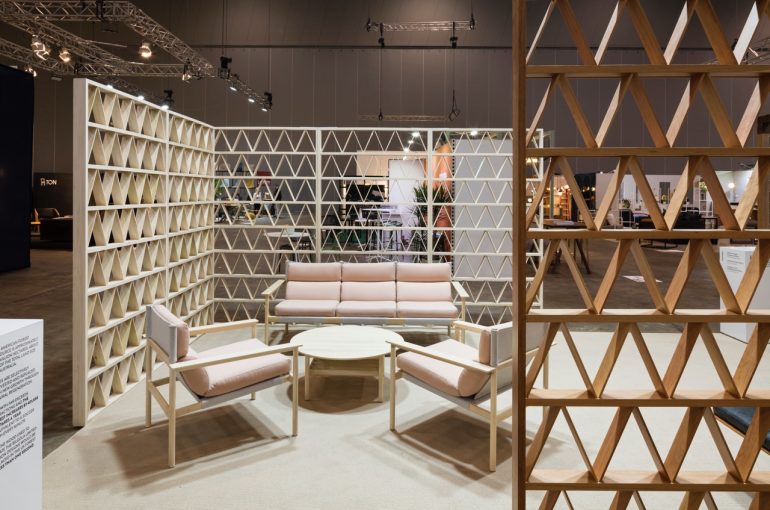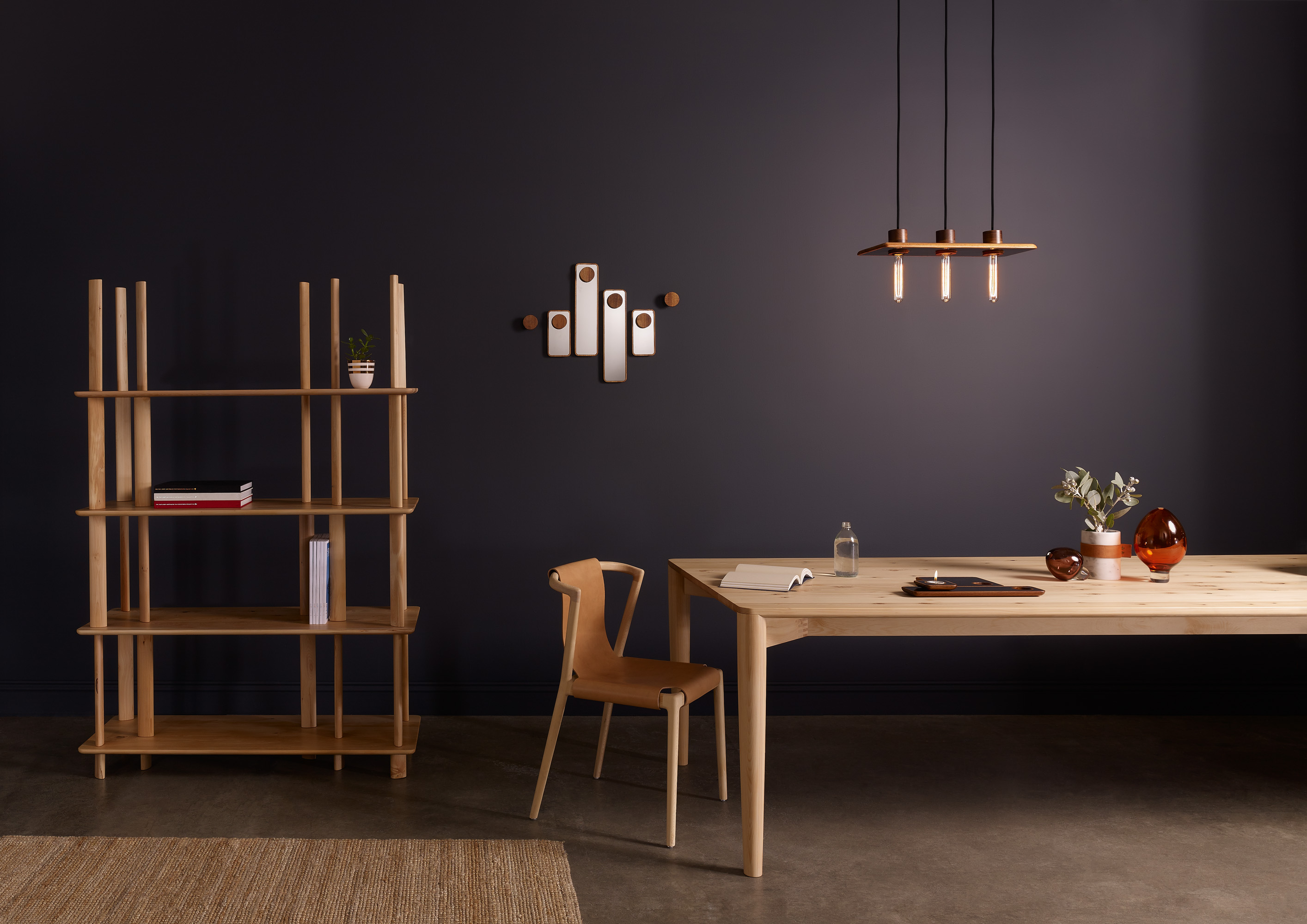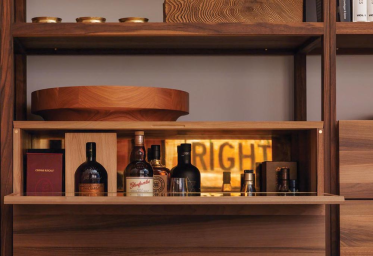
The Bilgola collection in American Tulip wood by Adam Goodrum. Photograph Dianna Snape.
There is something beautiful about a well-crafted piece of timber furniture and, with the right selection of species and appropriate care, a chair or table can last a lifetime. Though the question remains – is timber ultimately sustainable?
Australian designer, Adam Goodrum, believes that showing consideration for the environmental impact of design should be fundamental to any good designer’s practice. He achieves this by producing only small numbers of high-quality pieces, designed to stand the test of time – combining careful material selection with a consideration for all elements of the production process.
His Bilgola Limited Edition range for new brand NAU, launched at Melbourne’s DENFAIR in June, is a clear demonstration of the true environmental impact of good design. Remarkably, the timber used in all five pieces of the range is replaced naturally by new growth in the US hardwood forest in less than one second and has the same carbon footprint over its lifetime as a single 350-kilometre journey in an average Australian car.
To understand how this is possible, one has to first turn to the source of the wood selected for the range. The American cherry and tulipwood chosen for his collaboration with the American Hardwood Export Council and NAU by Cult comes from forests that cover 120 million hectares of the US – forests that have been managed sustainably for generations. They are owned not by big corporations, but by nearly 10 million private landowners who selectively harvest trees that are then replaced through natural regeneration. Each year the timber is growing more rapidly than it is extracted and the forest increases in size by 401,000 hectares – the equivalent of a soccer pitch every minute.

The Bilgola collection in American Cherry wood by Adam Goodrum. Photograph Dianna Snape.
Through environmental life cycle assessment, all elements of the timber production process can be captured. For Goodrum’s range, the carbon stored in the hardwoods exceeds all the carbon emissions associated with extraction, processing and transport. Despite the timber’s journey from the US to the Evostyle factory in Sydney’s north-west, the timber used for the Limited Edition range remains carbon negative.
Sharing Adam Goodrum’s enthusiasm for understanding the environmental impact of its work, Evostyle has precisely recorded all energy used by each machine involved in the manufacturing process, in addition to meticulously measuring and monitoring all waste. This enabled an independent assessor to establish the carbon footprint of the timber in the finished Bilgola Limited Edition range to be just over 65 kilograms of CO2e (carbon dioxide equivalent). That’s about the same as an Australian adult produces in just 30 hours.

The Hydrowood extraction process at Lake Pieman, Tasmania.
Locally, the timber industry is a contentious issue, especially in Tasmania where highly sought after species like Huon pine are becoming scarcer by the day. Hydrowood, a relatively new organisation, is responding to this issue by extracting timbers from a man-made lake in the state’s far north-west.
Lake Pieman, the first port of call for this ambitious project, was created over 30 years ago as part of a hydroelectric scheme. In damming the Pieman River an entire old growth forest was submerged. Today this forest is being logged, tree by tree, using what is best described as a giant claw with a chainsaw inside it. It is an incredible sight and across the country designers and architects are looking south for timbers that have nearly been forgotten.

Dessein Furniture’s Pieman collection using Hydrowood timber. Photograph Haydn Cattach.
Kiln dried, once extracted, this new source of old timbers is creating jobs and, while not sustainable in the traditional sense (the forests can’t be replanted), it ticks all the boxes when it comes to environmental impact. The results formed the inspiration for Dessein Furniture’s Pieman Collection, launched at DENFAIR in 2016. It is incredible to think that, six months prior, the timber on display was underwater.
Through such collaborations, Goodrum and his fellow Australian designers have put to the test their desire to create furniture with a minimal environmental impact – in turn keeping industries alive and our footprint light.
For more information on American hardwood species and Australian distributors, talk to your architect, designer or visit americanhardwood.org and similarly, for Hydrowood, visit hydrowood.com.au.
WRITTEN BY HouseLab








